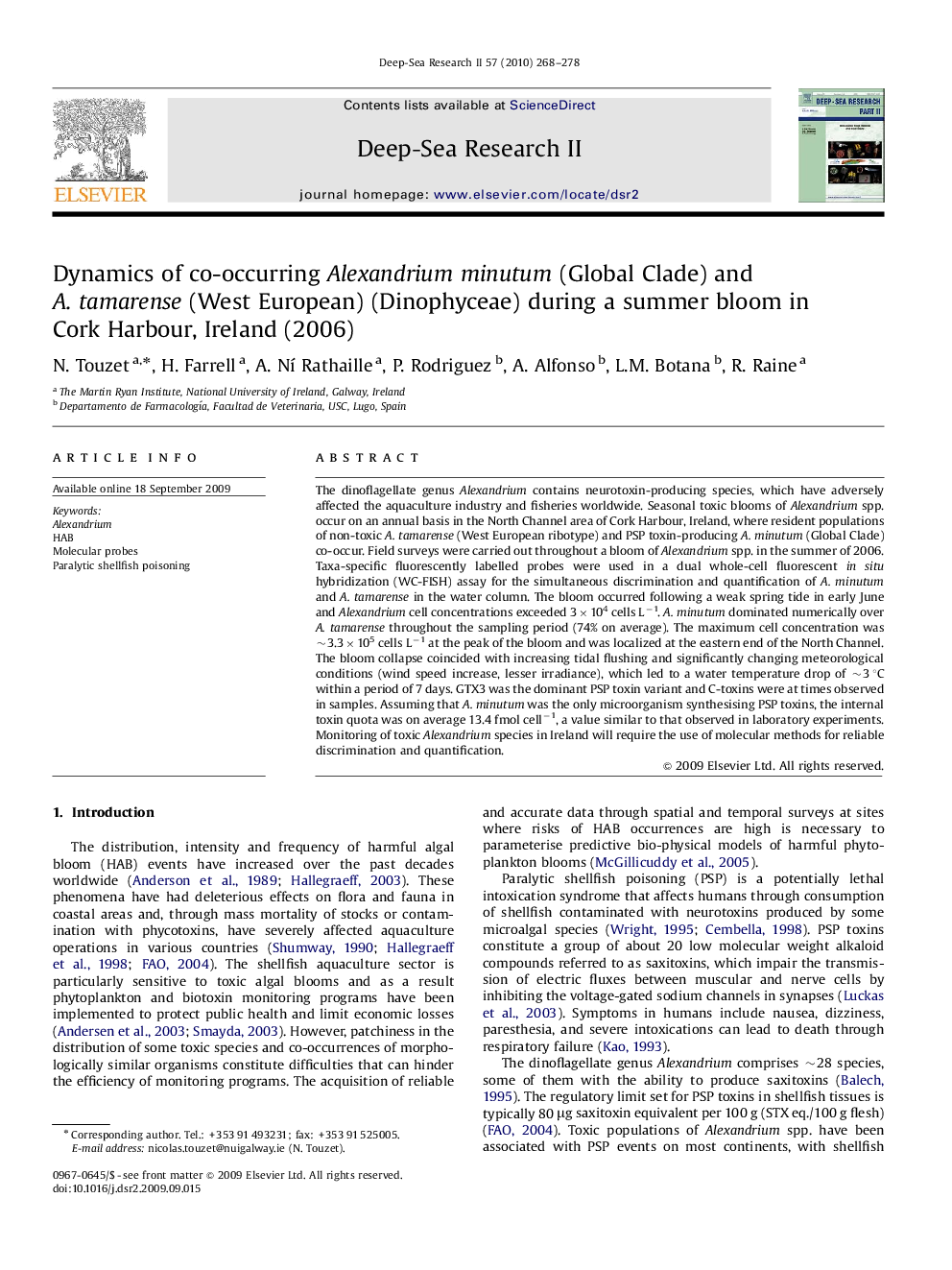| Article ID | Journal | Published Year | Pages | File Type |
|---|---|---|---|---|
| 4537358 | Deep Sea Research Part II: Topical Studies in Oceanography | 2010 | 11 Pages |
The dinoflagellate genus Alexandrium contains neurotoxin-producing species, which have adversely affected the aquaculture industry and fisheries worldwide. Seasonal toxic blooms of Alexandrium spp. occur on an annual basis in the North Channel area of Cork Harbour, Ireland, where resident populations of non-toxic A. tamarense (West European ribotype) and PSP toxin-producing A. minutum (Global Clade) co-occur. Field surveys were carried out throughout a bloom of Alexandrium spp. in the summer of 2006. Taxa-specific fluorescently labelled probes were used in a dual whole-cell fluorescent in situ hybridization (WC-FISH) assay for the simultaneous discrimination and quantification of A. minutum and A. tamarense in the water column. The bloom occurred following a weak spring tide in early June and Alexandrium cell concentrations exceeded 3×104 cells L−1. A. minutum dominated numerically over A. tamarense throughout the sampling period (74% on average). The maximum cell concentration was ∼3.3×105 cells L−1 at the peak of the bloom and was localized at the eastern end of the North Channel. The bloom collapse coincided with increasing tidal flushing and significantly changing meteorological conditions (wind speed increase, lesser irradiance), which led to a water temperature drop of ∼3 °C within a period of 7 days. GTX3 was the dominant PSP toxin variant and C-toxins were at times observed in samples. Assuming that A. minutum was the only microorganism synthesising PSP toxins, the internal toxin quota was on average 13.4 fmol cell−1, a value similar to that observed in laboratory experiments. Monitoring of toxic Alexandrium species in Ireland will require the use of molecular methods for reliable discrimination and quantification.
